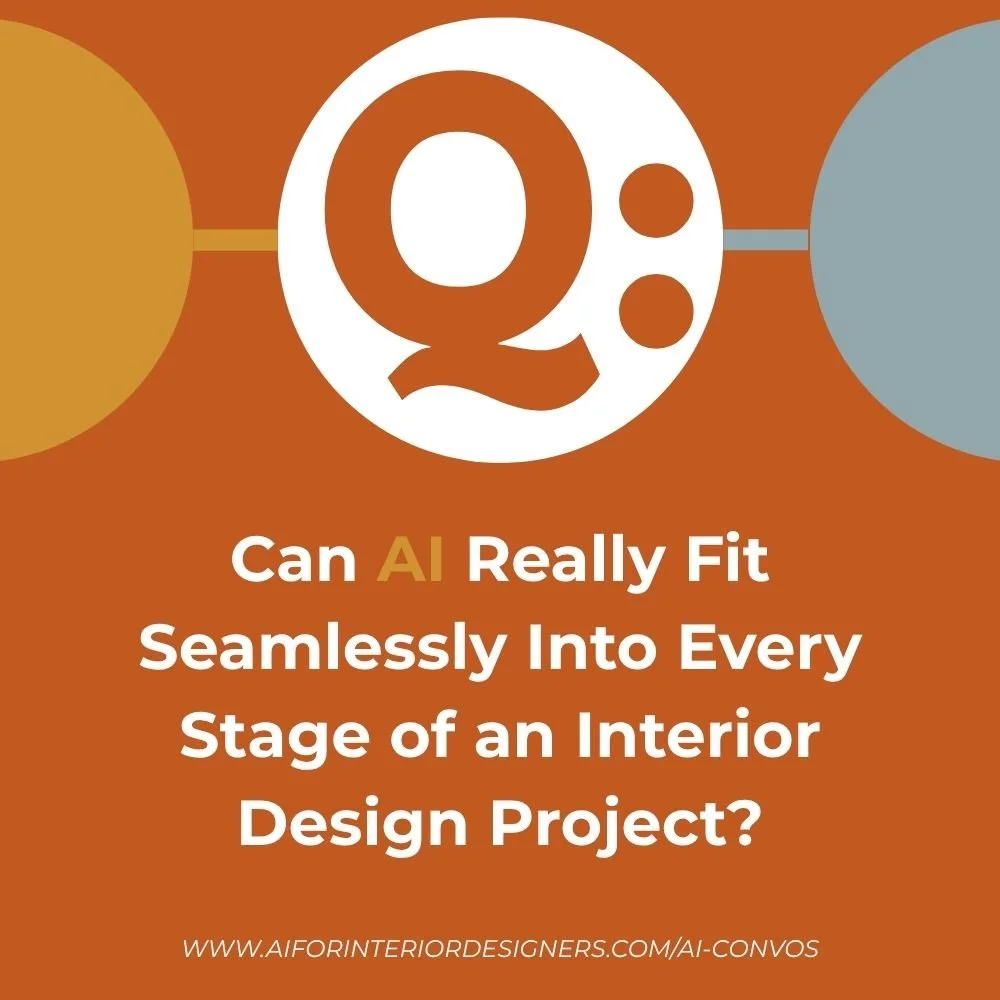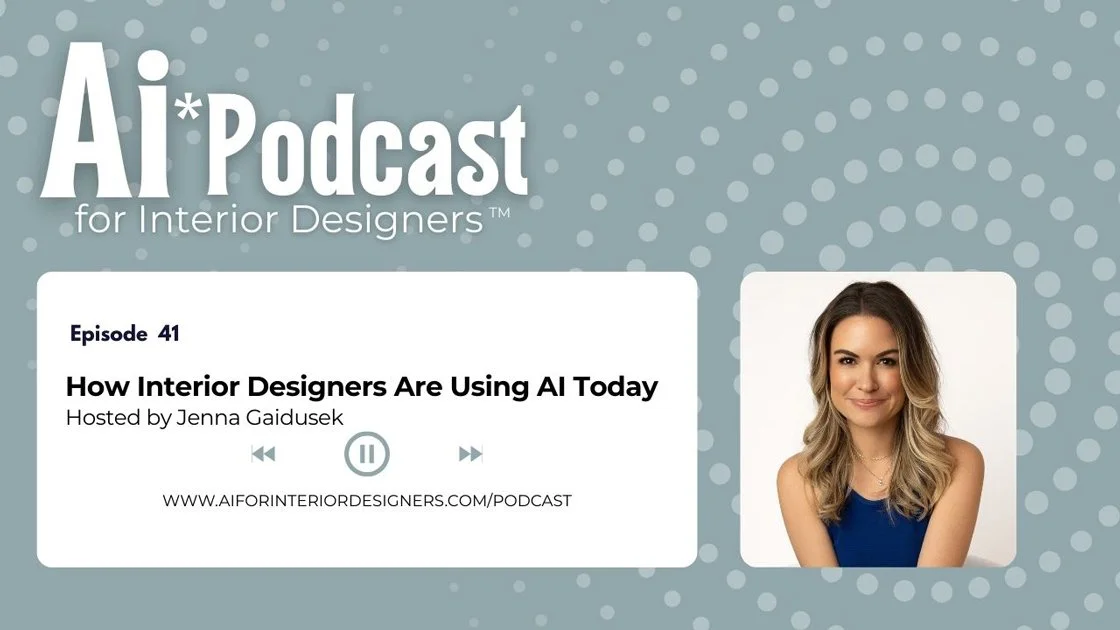Can AI Really Fit Seamlessly Into Every Stage of an Interior Design Project?
Practical Insights on Using AI from Concept to Completion in Interior Design Projects
A conversation between Jenna Gaidusek, Founder of AI for Interior Designers, and Julia Reinert, Founder of The Lifestyle Historian
Based on AI for Interior Designers *Podcast Episode 41 - How Interior Designers Are Using AI Today
Interior design is no longer just about color palettes and statement pieces. Today, it's also about client onboarding, documentation, scheduling, procurement, and so much more. And while design school may teach you about space planning and style, it rarely prepares you for the endless admin and follow-up that eats into your creative time.
But what if every part of that process-yes, even the boring parts!-could be optimized by AI?
In episode 41 of her podcast AI for Interior Designers, Jenna Gaidusek takes listeners on a tour of how designers are already using AI today from initial client meetings to project closeout. The big question we’re diving into this week is:
Q: Can AI really integrate into every phase of a design project without making things more complicated?
Jenna Gaidusek (Founder of AI for Interior Designers):
This is the shift that’s blowing my mind the most right now. A lot of people think that AI only helps with visual tasks like renderings or mood boards but it’s now a full-fledged partner across the entire workflow. We’re talking about tools like Fathom and Plaud that transcribe and summarize meetings automatically, so I don’t miss details or have to rewatch hours of Zoom calls.
Then there’s Lindy, my new favorite virtual assistant. It joins calls, schedules meetings, and even drafts emails for follow-ups. That’s huge when you’re juggling multiple clients and tradespeople at once. And Motion Calendar? It basically rebuilds my week in real-time based on shifting priorities. I used to spend an hour every Sunday calendar planning. Now I get that hour back.
For actual design work, MyArchitect helps with architectural modeling, while MyDoma incorporates AI for managing selections, mood boards, and client approvals. And regarding procurement-that is where Meti AI steps in by automating order tracking and keeping everything organized across vendors.
The key is that these tools aren’t isolated. They’re integrated into how we already work. Instead of flipping between platforms or creating everything from scratch, AI makes things faster and more fluid. You still need to bring the vision and the personal preference but AI clears the path so you can actually enjoy the design process again.
Julia (Founder of The Lifestyle Historian):
A couple of years ago my family held an intervention for me regarding my daily planner. I was adamant that I would never give up my small colorful binder full of handwritten notes and printed out email confirmations. Yes, it was not that long ago that I was still printing out reference numbers and directions to stick into my planner. It was time to give up my security blanket and acclimate to the 21st century. I cannot claim all of the AI platforms that Jenna mentioned but just a few short years later my calendar is completely digital, ChatGPT has become a wonderful resource and trusted confidante, and every virtual meeting is transcribed and logged.
What really stood out to me in this episode was how practical all of this has become. I think a lot of people, myself included, assume that AI tools are either too tech-heavy or too disconnected from how we actually work day to day. But Jenna lays it out in a way that honestly feels doable.
For example, solutions for streamlining client onboarding is a gamechanger. My company has several pillars over several industries so there is not a lot of time for organizing intake forms, digging through emails, or trying to remember what was said in a call. Using something like Fathom or Plaud to instantly capture and summarize those conversations is a huge relief.
And let’s be real: we are running full businesses. When Jenna mentioned tools like Meti AI for procurement and Motion for time-blocking, it made me realize this isn’t just about saving time. It’s about staying sane. If you can remove the friction from the backend, you get to show up more fully in the client-facing, creative work that people actually hire you for.
Bottom line is that you don’t have to master everything at once. Just start by solving one pain point, like scheduling or sourcing, and go from there. Once you see that AI doesn’t overcomplicate things, but simplifies them, it’s kind of addictive.
Final Thoughts (from both of us):
The future of interior design isn’t about automation for automation’s sake. It’s about creating more space that allows for more creativity, strategy, and connection.
AI isn’t here to replace designers. It’s here to support them at every phase: from that first discovery call to final delivery. And when used intentionally, it doesn’t complicate the process. Rather, it smooths it out.
So whether you’re a designer managing a solo practice or leading a team, now is the time to explore how these tools can work for you and not against you.
Expert Resources and Next Steps
The DAIly Training Program - Comprehensive AI implementation for design professionals
AI for Interior Designers Podcast - Weekly insights and tool reviews
AI Interior Design Tools: Game-Changing Technology for Creative Professionals





